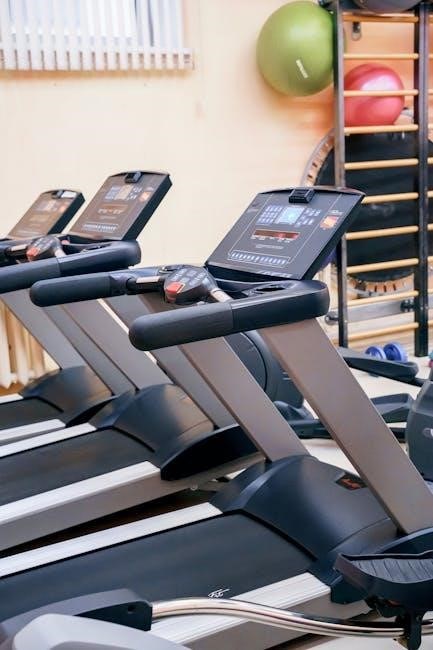Manually moving a power seat requires knowledge of specific procedures and
- precautions
to avoid damage, using online resources to guide the process effectively always.
Understanding the Importance of Proper Seat Positioning
Proper seat positioning is crucial for safe and comfortable driving, as it affects the driver’s ability to operate the vehicle effectively. A well-positioned seat enables the driver to maintain a comfortable distance from the pedals and steering wheel, reducing the risk of accidents and injuries. According to online resources, a correct seat position also helps to prevent fatigue and discomfort during long drives. Furthermore, proper seat adjustment can help to improve the driver’s visibility and control of the vehicle. The importance of proper seat positioning cannot be overstated, as it has a significant impact on the overall driving experience. By understanding the importance of proper seat positioning, drivers can take the necessary steps to adjust their seats correctly and ensure a safe and comfortable driving experience. This knowledge is essential for all drivers, especially those who spend a lot of time on the road. Additionally, proper seat positioning can also help to reduce the risk of back and neck pain.
Common Issues with Power Seats
Power seats can be prone to various issues, including faulty switches, worn-out motors, and damaged wiring. These problems can cause the seat to malfunction or become stuck in a particular position. According to online resources, one of the most common issues with power seats is a faulty power seat switch, which can prevent the seat from moving at all. Other issues can include loose or corroded connections, blown fuses, and malfunctioning seat motors. In some cases, the problem may be due to a software issue or a malfunctioning sensor. Regardless of the cause, a malfunctioning power seat can be frustrating and inconvenient. It can also pose a safety risk if the seat is stuck in a position that obstructs the driver’s view or prevents them from operating the vehicle safely. By understanding the common issues with power seats, drivers can take steps to troubleshoot and repair the problem, or seek the help of a professional mechanic if necessary. Regular maintenance and inspections can also help to prevent these issues from occurring.

Locating the Manual Override Lever
The manual override lever is usually located underneath the power seat, requiring users to check their vehicle’s documentation or online resources for specific location details always.
Steps to Manually Move a Power Seat in a Nissan Maxima
To manually move a power seat in a Nissan Maxima, start by ensuring the seat is in the upright position, then locate the manual override lever or handle underneath the seat. Use this lever to adjust the seat to the desired position, taking care not to apply excessive force. If the seat is stuck, try gently wiggling the lever or using a rubber mallet to tap the seat rail and loosen it. It is essential to follow the correct procedures to avoid causing damage to the seat or the vehicle’s electrical system. By consulting the vehicle’s documentation or online resources, users can find specific instructions tailored to their Nissan Maxima model. Additionally, taking necessary precautions, such as ensuring the engine is off and the batteries are disconnected, can help prevent accidents or injuries. Following these steps, users can successfully manually move their power seat and adjust it to a comfortable position. This process requires patience and attention to detail, but it can be accomplished with the right guidance and precautions.
Precautions to Take When Manually Moving a Power Seat
When manually moving a power seat, it is crucial to take necessary precautions to avoid accidents or injuries. Users should ensure the engine is off and the batteries are disconnected to prevent any electrical shocks or malfunctions. Additionally, wearing protective gear such as gloves and safety glasses can help prevent injuries from sharp edges or flying debris. It is also essential to consult the vehicle’s documentation or online resources to understand the specific precautions required for the particular vehicle model. By taking these precautions, users can minimize the risk of damage to the seat, the vehicle’s electrical system, or themselves. Moreover, being aware of the surrounding environment and ensuring the area is clear of any obstacles or tripping hazards can also help prevent accidents; Users should also be mindful of their own physical limitations and take regular breaks to avoid fatigue. Following these precautions, users can safely and successfully manually move their power seat. This attention to detail and caution can help prevent a range of potential problems.

Removing the Seat for Manual Adjustment
Removing the seat requires careful handling and
- specific
tools to avoid damage always.
Safety Considerations When Working with Electrical Parts
When working with electrical parts, it is essential to take necessary safety precautions to avoid injuries or damage to the vehicle. The first step is to ensure that the engine is off and the batteries are disconnected to prevent any accidental start-ups or electrical shocks. Additionally, it is crucial to wear protective gear such as gloves and safety glasses to prevent injuries from sharp edges or electrical sparks. It is also important to consult the vehicle’s manual or online resources to understand the electrical system and identify potential hazards. By taking these safety considerations into account, individuals can minimize the risk of accidents and ensure a successful manual adjustment of the power seat. Furthermore, working in a well-ventilated area and using insulated tools can also help prevent electrical shocks and injuries. Overall, safety should always be the top priority when working with electrical parts.
Tools Needed for Manually Moving a Power Seat
To manually move a power seat, several tools are required, including a screwdriver, pliers, and a wrench. A rubber mallet may also be necessary to gently tap the seat rail and loosen any stuck parts. Additionally, a Torx screwdriver may be needed to remove the seat trim and access the manual override lever. It is essential to use the correct tools to avoid damaging the seat or the vehicle’s electrical system. A multimeter can also be useful in diagnosing any electrical issues that may be preventing the power seat from functioning. Furthermore, a pair of insulated gloves and safety glasses can provide protection from electrical shocks and sharp edges. By having these tools on hand, individuals can successfully manually move their power seat and avoid any potential hazards. The tools should be of good quality and in good condition to ensure effective and safe manual adjustment of the power seat.

Consequences of Inappropriate Power Seat Position
Inappropriate power seat position can lead to accidents and
- injuries
due to reduced visibility and control always.
Impact on Driver Safety and Comfort
The impact of an inappropriate power seat position on driver safety and comfort is significant, as it can affect the driver’s ability to operate the vehicle safely and comfortably. A power seat that is not adjusted correctly can lead to fatigue, discomfort, and decreased visibility, which can increase the risk of accidents. Furthermore, a power seat that is stuck or malfunctioning can be a major distraction for the driver, taking their attention away from the road. To avoid these risks, it is essential to know how to manually move a power seat, as this can help to ensure that the driver is comfortable and safe while driving. By adjusting the power seat to the correct position, drivers can reduce their risk of injury and improve their overall driving experience. This knowledge is especially important for drivers who spend a lot of time on the road, as it can help to prevent fatigue and discomfort. Additionally, being able to manually move a power seat can provide drivers with a sense of control and confidence while driving, which is essential for safe and comfortable driving. Manual adjustment of power seats is a valuable skill that all drivers should possess.
Benefits of Learning How to Manually Move a Power Seat

Learning how to manually move a power seat can have numerous benefits for drivers, including increased safety and comfort on the road. By knowing how to adjust the seat manually, drivers can ensure that they are always in a comfortable and safe position, even if the power seat is malfunctioning. This knowledge can also provide drivers with a sense of independence and self-reliance, as they will not have to rely on others to adjust their seat. Additionally, learning how to manually move a power seat can be a valuable skill to have in emergency situations, such as if the power seat becomes stuck or malfunctioning while driving. Overall, the benefits of learning how to manually move a power seat make it an essential skill for all drivers to possess. With this knowledge, drivers can drive with confidence and peace of mind, knowing that they are always in control of their vehicle. This skill is also transferable to other vehicles, making it a valuable investment of time and effort. By taking the time to learn how to manually move a power seat, drivers can reap the rewards of increased safety, comfort, and independence.
